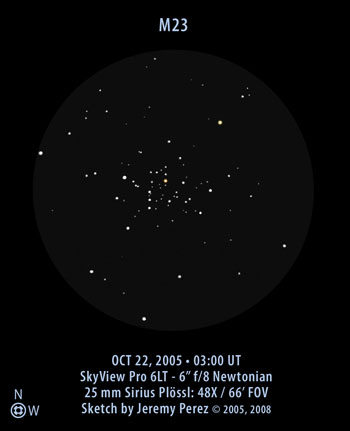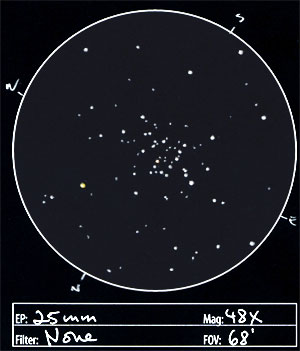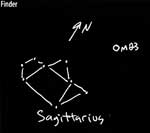
Click image for larger version.
The above sketch is an update to the original to clean it up, scale down fainter stars, and update formatting. The original is shown below.

Observation Notes:
 This cluster was rich with stars, but not strongly condensed. A box and oval asterism stood out in the center. It seemed to elongate northwest to southeast.
This cluster was rich with stars, but not strongly condensed. A box and oval asterism stood out in the center. It seemed to elongate northwest to southeast.
Object Information:
This open cluster lies about 2,150 light years away and is 15-20 light years in diameter. There is a range of Trumpler classifications from I2R (Trumpler), II2r (Götz), and III1m (Sky Catalog 2000). It contains at least 150 proven member stars, the hottest of which are type B9. Its age is estimated at 220 to 300 million years.
M23 was discovered by Charles Messier in 1764.
| Subject | M23 (NGC 6494) |
| Classification | Open Cluster (Type e) |
| Position* | Sagittarius [RA: 17:56:48 / Dec: -19:01:00] |
| Size* | 27.0′ |
| Brightness* | 6.9 |
| Date/Time | October 21, 2005 – 8:00 PM (October 22, 2005 – 03:00 UT) |
| Observing Loc. | Flagstaff, AZ – Home |
| Instrument | Orion SVP 6LT Reflector (150 mm dia./1200 mm F/L) |
| Eyepieces/Mag. | 25 mm (48X) |
| Conditions | Clear, calm, 55°F |
| Seeing | 3/10 Pickering |
| Transparency | Mag 4.7 NELM (based on 4-Sagittarius) |
| Sources | SEDS |
*Based on published data.